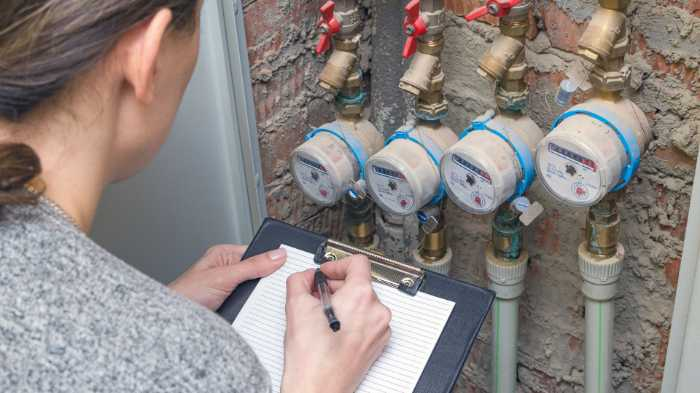Sustainable Development has become a critical issue for businesses in recent years. As we face more and more environmental challenges, it is important for companies to find ways to reduce their environmental impact. Sustainability training can help your business achieve this goal. In this comprehensive guide, we will discuss the basics of sustainability training and how it can help your company improve its environmental performance.
- What is sustainable development?
- The basics of sustainability training
- How to implement environmental sustainability training in your business?
- Tips for getting the most out of your corporate sustainability training
- How can businesses attain sustainability certification online?
- What are the sustainable development goals?
- FAQs
What is sustainable development?
Sustainable development is a process of meeting the needs of current generations without jeopardizing the ability of future generations to meet their own needs. In other words, sustainable development is about finding ways to improve the quality of life without causing long-term damage to the environment or depleting natural resources.
To achieve sustainable development, we need to find a balance between environmental protection, economic growth, and social equity. This means using resources wisely, reducing pollution and waste, and ensuring that everyone has access to the basics they need to live a good life. It’s a challenge, but one that is essential for our survival.
What is sustainability training?

Sustainability training covers a wide range of topics related to environmental and social responsibility. It can include topics like energy efficiency, waste reduction, sustainable purchasing, and climate change. The goal of sustainability training is to help organizations operate in a more environmentally and socially responsible way.
Many sustainability training programs are voluntary, but some companies are beginning to require employees to complete sustainability training as part of their jobs. This trend is likely to continue as more companies recognize the benefits of operating in a sustainable way.
The basics of sustainability training
As the world becomes increasingly aware of the need to protect our environment, sustainability training has become an important part of many business operations. Teaching employees about sustainability helps to ensure that your business is able to reduce its impact on the environment and operate in a more eco-friendly manner. There are a few key things that should be covered in any sustainable development training program.
1. Importance of reducing energy consumption

One key area of focus in sustainability training is reducing energy consumption. Here are three reasons why this is so important:
- Reducing energy consumption can save businesses money.
- Reducing energy consumption can help to reduce greenhouse gas emissions and other environmental impacts.
- Reducing energy consumption can improve employee productivity by creating a more comfortable working environment.
When it comes to sustainability training, employees should be taught about the importance of reducing energy consumption. This can be done by implementing energy-saving measures such as turning off lights and equipment when they’re not in use. In addition, employees should be encouraged to adopt sustainable lifestyle habits such as carpooling or taking public transportation.
By reducing energy consumption, businesses can save money, reduce their environmental impact, and improve employee productivity.
2. Recycling and composting

Recycling and composting are two of the most basic elements of sustainability, and employees should be encouraged to recycle and compost wherever possible. Many recycling programs allow employees to recycle paper, plastic, metal, and glass, and some programs even allow for the recycling of electronics. Composting programs typically allow employees to compost food waste and yard waste. This includes changing your diet to low-carbon foods.
By recycling and composting, employees can help their organizations reduce their environmental footprint. In addition, recycling and composting can also help to save money by reducing the amount of waste that needs to be disposed of. As such, recycling and composting are two key elements of sustainability that all employees should be aware of.
You can’t improve what you don’t measure.
Free Verified Carbon Calculators.
Erase Your Carbon Footprint in less than 5 Minutes
Personal Carbon Footprint Calculator
Business Carbon Footprint Calculator
3. Reduce water consumption

One way to reduce the impact of business operations is to reduce water consumption. There are a number of ways to do this, including fixing leaks, using low-flow fixtures, and reducing outdoor watering. By educating employees on these simple steps, businesses can make a significant dent in their water consumption.
In addition, sustainability training can also help to engage employees and create a culture of environmental responsibility. If done correctly, sustainability training can be an important tool in the fight against climate change.
By teaching employees about sustainability, you can help to make your business more environmentally friendly and reduce your Company’s carbon footprint.
How to implement environmental sustainability training in your business?
Designing and implementing a sustainability training program can be a challenge. Here are a few tips to help you get started:
1. Assess your company’s current environmental footprint
Assessing your company’s current environmental footprint is the first step in implementing environmental sustainability training in your business. This will help you identify areas where your employees can make the biggest difference.
There are a number of ways to assess your company’s environmental footprint, but one common method is to use an ecological Footprint Analysis. This analysis looks at a variety of factors, including energy use, water use, waste generation, and greenhouse gas emissions.
By understanding your company’s current impact on the environment, you can develop targeted training that will empower your employees to make sustainable choices. In addition, you can also use this information to set sustainable development goals for reducing your company’s environmental footprint in a bid to create a sustainable future.
2. Look for opportunities to incorporate sustainability into existing training programs
As more and more businesses strive to operate in a sustainable manner, it is important to provide employees with training on sustainable development. There are many ways to incorporate sustainability into existing training programs. For example, if you offer new employees a tour of your facilities, you can use that opportunity to showcase your sustainable practices.
Alternatively, you can create a new training program specifically focused on sustainability. This could cover topics such as energy efficiency, waste reduction, and recycling. By providing employees with this type of training, you can help to ensure that your business keeps operating in a sustainable way.
3. Communicate the benefits of sustainability training to your employees
Environmental sustainability training can benefit your business in a variety of ways. In addition to reducing your company’s environmental impact, sustainable practices can also lead to improved efficiency and cost savings. If you communicate the benefits of sustainability training to your employees, you can help create a culture of environmental responsibility within your organization.
In turn, this can lead to improved morale and increased motivation among your employees. When it comes to making your business more sustainable, sustainability training is an essential piece of the puzzle.
4. Assess the needs of your business and employees
Assessing the needs of your business and employees is essential to determine the scope of environmental sustainability training. This will help you understand what topics need to be covered and allow you to create a plan that meets the specific needs of your company. There are a few key factors to consider when assessing the training needs of your business. First, you will need to consider the size and scope of your company.
Second, you will need to identify the specific sustainability goals of your company. Finally, you will need to assess the knowledge and skills of your employees. Once you have a clear understanding of these factors, you will be able to develop a training plan that meets the unique needs of your business.
5. Develop a training program
There are a few things to keep in mind when developing a training program. First, you’ll need to determine the objectives of the training. What do you want your employees to learn? Next, you’ll need to create a schedule of sessions. How often will the training take place? Finally, you’ll need to gather resources and materials. Make sure to include both digital and printed resources so that employees can reference them later. By following these steps, you can develop an effective environmental sustainability training program for your business.
6. Implement training program
Once the training plan is in place, you will need to implement it. This may involve delivering presentations or workshops, developing online resources, or providing printed materials. The most important thing is to make sure that the training is engaging and relevant to your employees. By providing practical information and real-world examples, you can ensure that your employees are well-equipped to make a positive impact on the environment.
7. Evaluate the effectiveness
Evaluating the effectiveness of environmental sustainability training in businesses is important to ensure that the training is achieving its desired outcomes. There are a few key indicators that can be used to evaluate the effectiveness of sustainability training. First, businesses can assess whether employees are able to apply the knowledge they have learned in the training to their work. This can be done through surveys or interviews with employees.
Additionally, businesses can measure whether there has been a decrease in environmental impacts since the sustainability training was implemented. This can be done by tracking metrics such as energy use, waste production, and water consumption.
Finally, businesses can evaluate the financial impact of the sustainability training. This can include calculating the cost savings from reduced resource use or increased efficiency. By assessing these indicators, businesses can ensure that their sustainability training is effective and making a positive impact.
By following these steps, you can ensure that your business is doing its part to promote sustainability.
Go Carbon Neutral – in only 3 Minutes!
Tips for getting the most out of your corporate sustainability training

As the world becomes increasingly focused on sustainability, more and more businesses are incorporating sustainable practices into their operations. However, making the transition to a sustainable business model can be challenging, and it often requires specialized training. If your company is planning to roll out a corporate sustainability training program, here are seven tips to help you get the most out of the training:
1. Define your goals
Before you begin the training program, take some time to define what you hope to achieve. Do you want to reduce your carbon footprint? Increase efficiency? Save money? Once you have a clear understanding of your goals, you can tailor the training to meet your specific needs.
2. Make a plan
Once you know what you want to accomplish, you need to develop a plan for how you will reach those goals. What types of sustainable practices do you want to implement? How will you track progress and measure success? Having a well-defined plan will make it easier to stay on track during the training program.
3. Engage employees
Sustainable change doesn’t happen without buy-in from employees. Make sure to include employees in the planning process and give them a chance to provide input on the direction of the training program. And once the sustainability program is underway, continue to engage employees by soliciting feedback and involving them in decision-making.
4. Focus on behavior change
The goal of sustainability training is not simply to educate employees about environmental issues; it’s also to change their behavior. When developing the training program, keep this goal in mind and design activities that will challenge employees to think about their impact on the environment and how they can make changes in their daily lives.
5. Incorporate technology
Technology can be a powerful tool for sustainability training programs. Use online tools to deliver information and engage employees in learning activities. You can also use technology to track progress and measure success over time.
6. Be flexible
As with any type of training, there will be some trial and error involved in developing a successful sustainability training program. Don’t be afraid to try new things and adjust your approach as needed based on feedback from employees and results achieved.
7. Make it fun!
Learning about sustainability doesn’t have to be dry or boring, it can actually be fun! Find creative ways to incorporate games and activities into the sustainability program that will capture employee interest and excitement about making sustainable changes in the workplace.
How can businesses attain sustainability certification online?
Sustainability certification can be attained by businesses in a number of ways, but taking an online course is often the most convenient option. There are a variety of sustainability training courses available online, which are designed in accordance with multiple sustainable standards. Completion of one of these courses will typically result in certification. In addition to being more convenient, taking an online course in sustainability may also be more cost-effective than attending a traditional classroom-based course.
Moreover, there are also some free online sustainability courses available for working professionals who want to want to play their role in environmental protection. As businesses increasingly look for ways to operate in a more sustainable fashion, online sustainability courses are likely to become more popular.
What are the sustainable development goals?

The United Nations has defined 17 sustainable development goals (SDGs) that are designed to address the world’s most pressing social, economic, and environmental challenges. The SDGs were developed through a process of consultation with member states, civil society organizations, and other relevant stakeholders. The goals are intended to be universal in nature, and they are designed to be achievable within a 15-year timeframe.
The 17 SDGs are:
- No Poverty
- Zero Hunger
- Good Health and Well-Being
- Quality Education
- Gender Equality
- Clean Water and Sanitation
- Affordable and Clean Energy
- Decent Work and Economic Growth
- Industry, Innovation, and Infrastructure
- Reduced Inequalities
- Sustainable Cities and Communities
- Responsible Consumption and Production
- Climate Action
- Life Below Water
- Life On Land
- Peace, Justice, and Strong Institutions
- Partnerships for the Goals.
What is sustainability management?

Sustainability management is the business practice of operating a company in a way that mitigates environmental risks and social risks, while also ensuring that the company is profitable. Sustainability managers are responsible for developing and implementing sustainability policies, programs, and initiatives. They work with other business leaders to integrate sustainability into the company’s operations, culture, and strategy. The goal of sustainability management is to create a positive change in the way businesses operate in today’s complex environment.
Leaders in sustainability management are using decision-making frameworks to identify opportunities for positive change. These tools help businesses consider the environmental, social, and economic impacts of their decisions. For example, a company might switch to renewable energy sources to reduce its carbon footprint. Or it might choose to source ingredients from local suppliers to reduce transportation emissions and support the local economy. By integrating environmental and social economics, companies can create a more prosperous and sustainable future for us all.
Conclusion
In conclusion, sustainable development is a process of economic, social, and environmental progress that meets the needs of present generations while protecting the planet for future generations. The 17 SDGs provide a framework for businesses to operate in a way that supports sustainable development. Sustainability training programs help business leaders understand how to integrate sustainability into their operations, culture, and strategy. Sustainability management is the process of integrating environmental and social responsibility into business operations in order to create a more sustainable future. Many colleges and universities are now offering sustainability management programs, which equip students with the skills they need to make a difference in the field. Leaders in sustainability management are using decision-making frameworks to identify opportunities for positive change. As we learn more about the complex and interconnected problems that face our world, it becomes increasingly important for businesses to adopt sustainable practices.
FAQs

What are the most efficient sustainable energy sources?
Solar and wind power are both renewable sources of energy that don’t produce harmful emissions. Hydroelectric dams can also be a sustainable source of energy, but they also have negative impacts on local ecosystems. Another promising sustainable energy source is geothermal power, which harnesses heat from the earth’s core to generate electricity. There are also a number of emerging technologies, like tidal power and biomass, that show promise as sustainable energy sources. The key is to continue developing new ideas and new technologies.
How can corporations guarantee a sustainable future?
One way corporations can help ensure a sustainable future is by familiarizing themselves with the United Nations’ Sustainable Development Goals. The SDGs are a blueprint for achieving a more sustainable world by 2030. It requires that businesses play a major role in helping to achieve them. Many companies are already incorporating sustainable development into their operations, but there is still much room for improvement. By setting sustainable development goals of their own and implementing sustainable strategies, businesses can reduce their own risk. The best way for corporations and companies to help is to Get the Checklist! ⬆️
What is a circular economy?
A circular economy is an alternative to the traditional linear economy, in which resources are used once and then discarded. In a circular economy, rather than being wasted, resources are reused and recycled, so that they remain in the system for as long as possible. This can be achieved through a variety of means, such as using renewable energy, redesigning products for longevity or repairability, or using food waste to create new products. By keeping resources in use for longer, a circular economy reduces strain on ecological systems and helps to create more sustainable business models.

Dean Emerick is a curator on sustainability issues with ESG The Report, an online resource for SMEs and Investment professionals focusing on ESG principles. Their primary goal is to help middle-market companies automate Impact Reporting with ESG Software. Leveraging the power of AI, machine learning, and AWS to transition to a sustainable business model. Serving clients in the United States, Canada, UK, Europe, and the global community. If you want to get started, don’t forget to Get the Checklist! ✅
